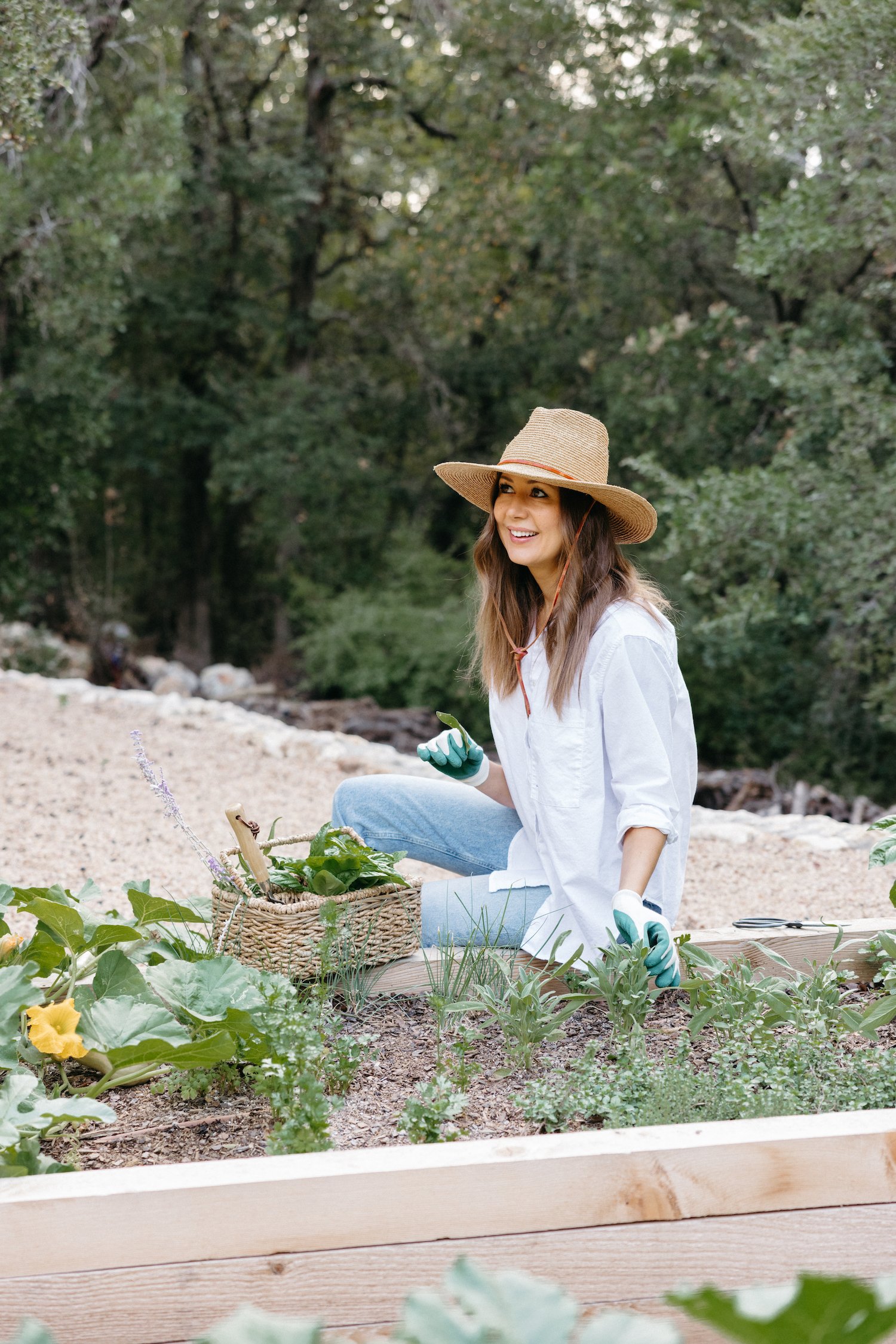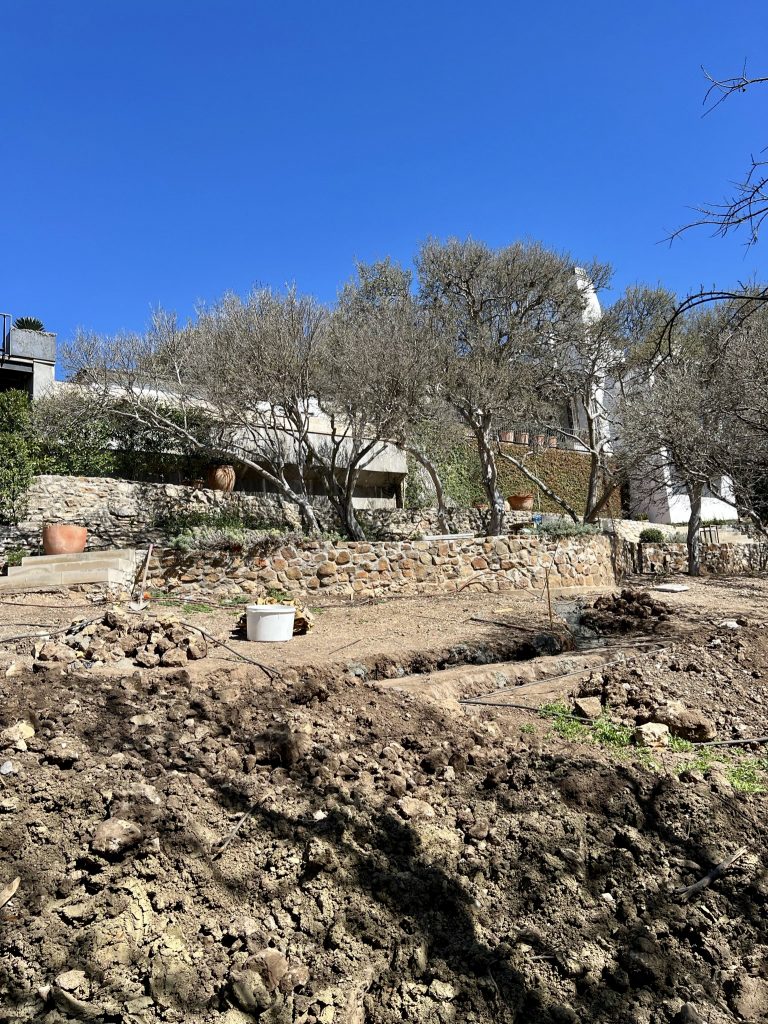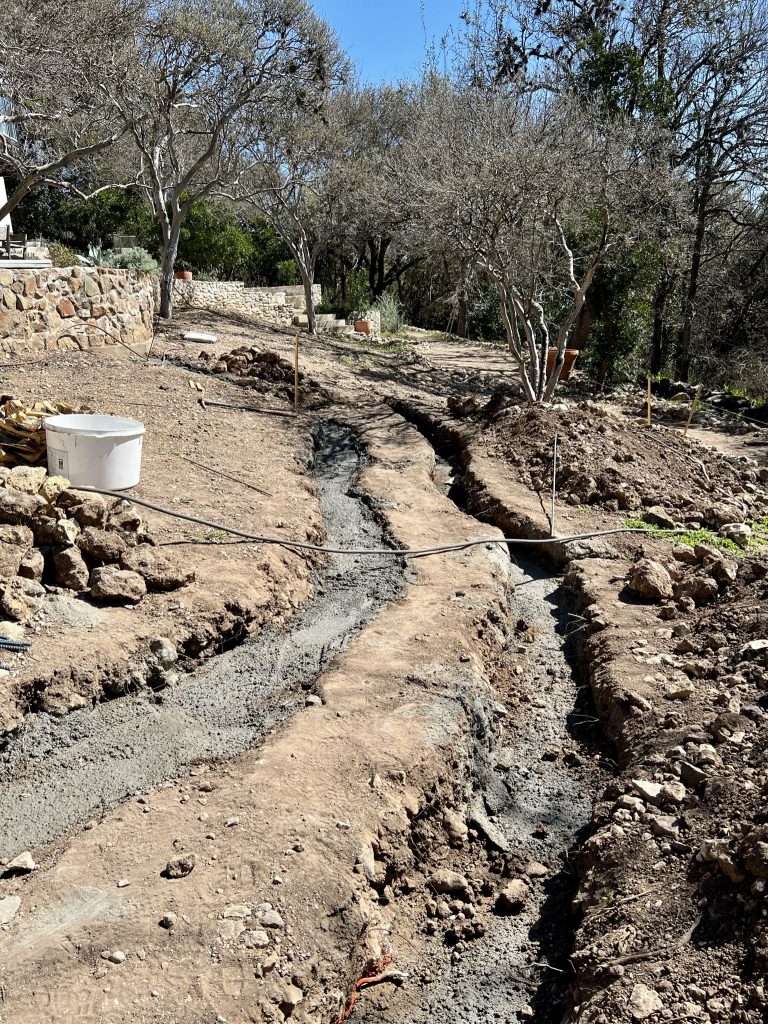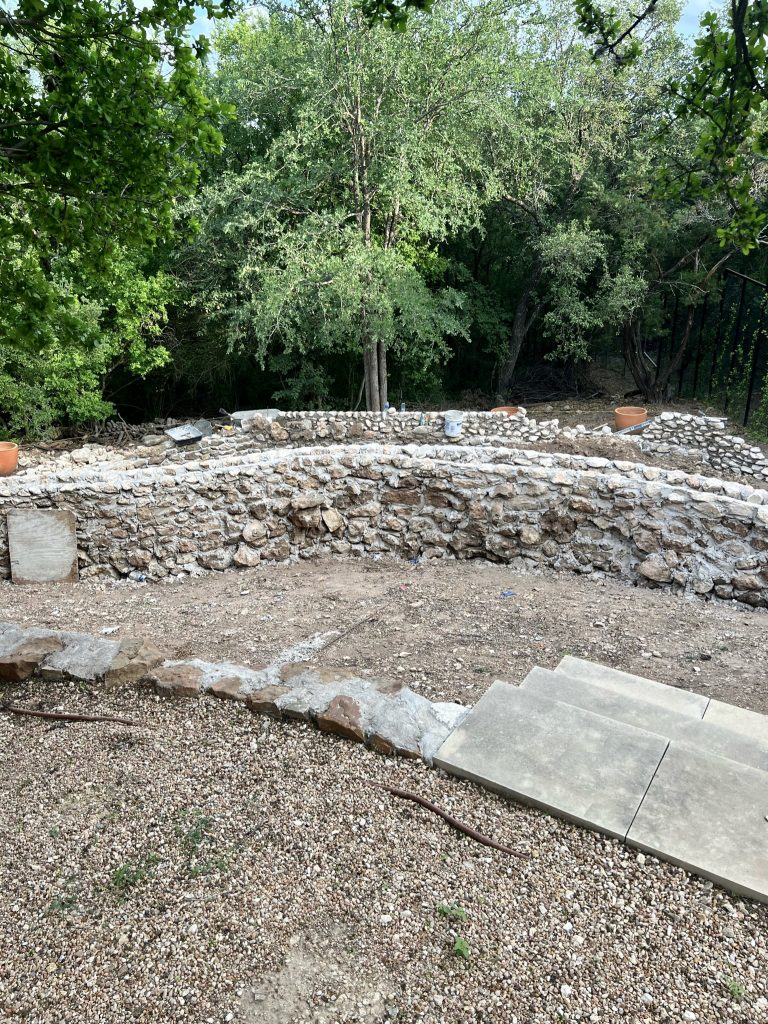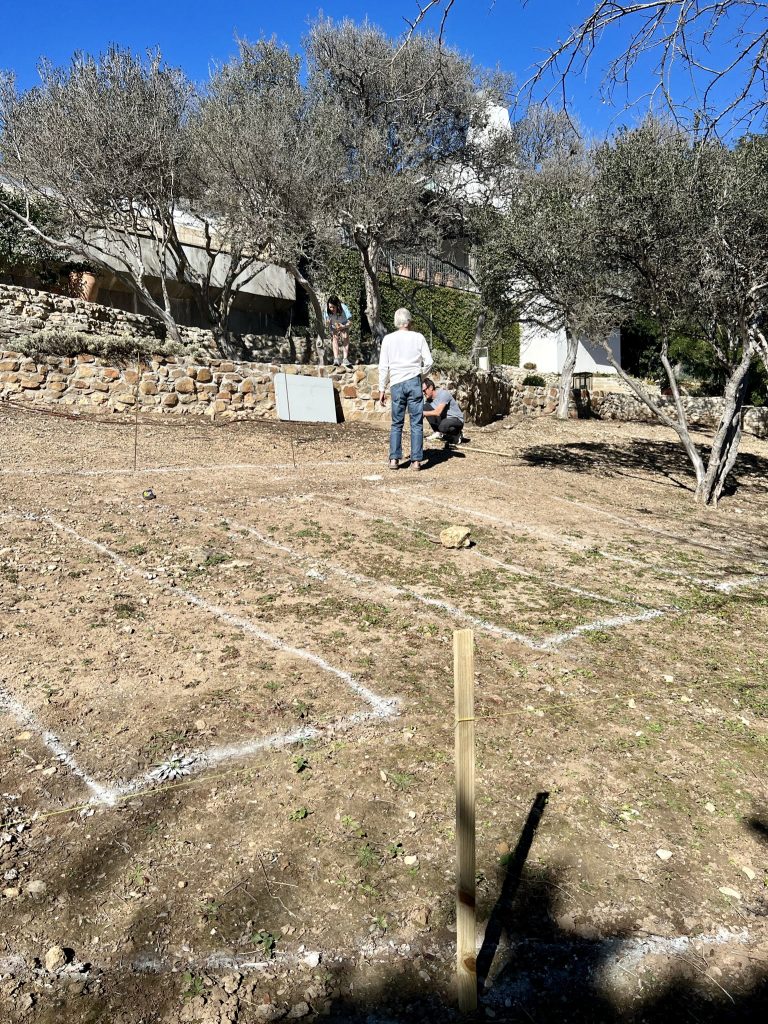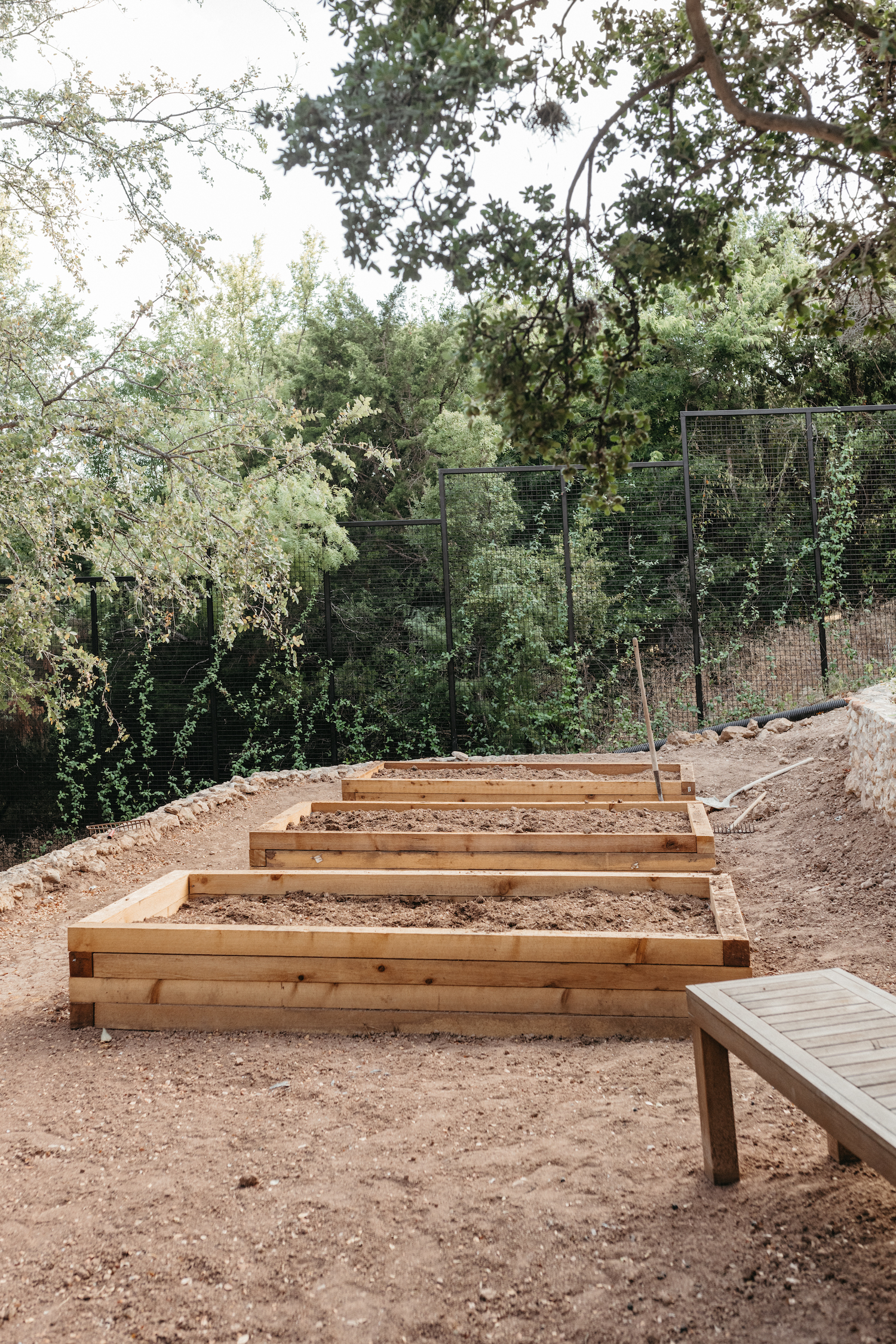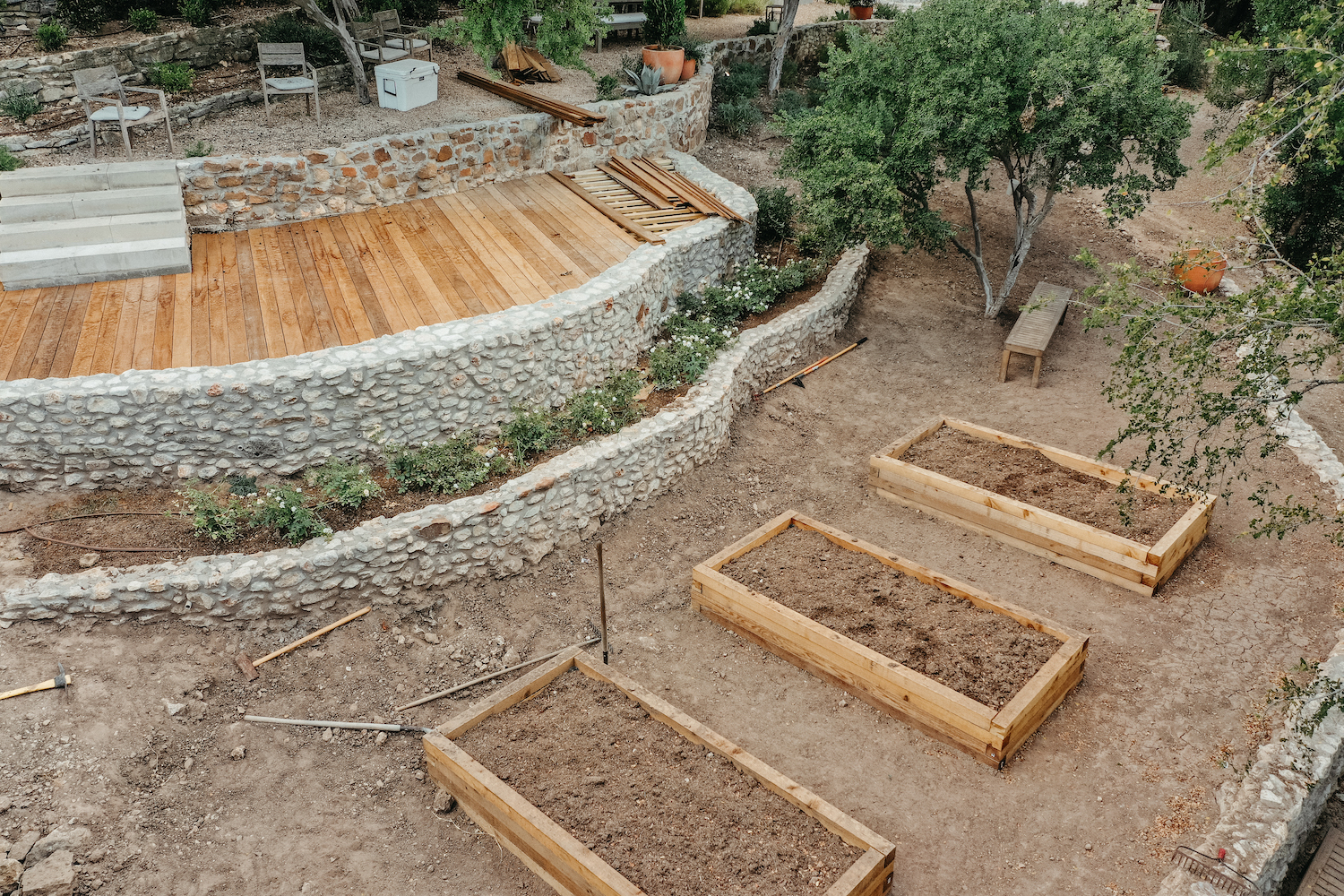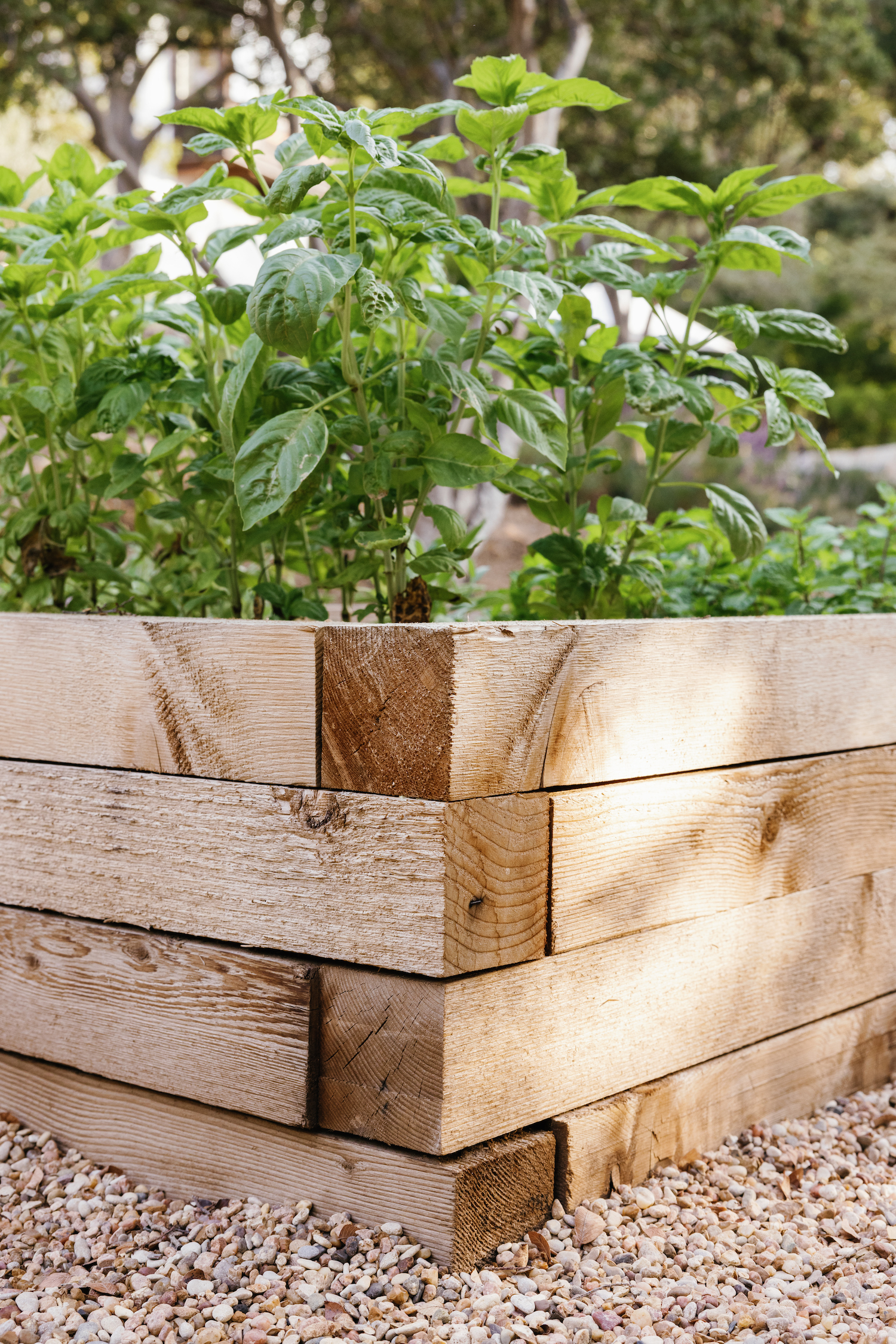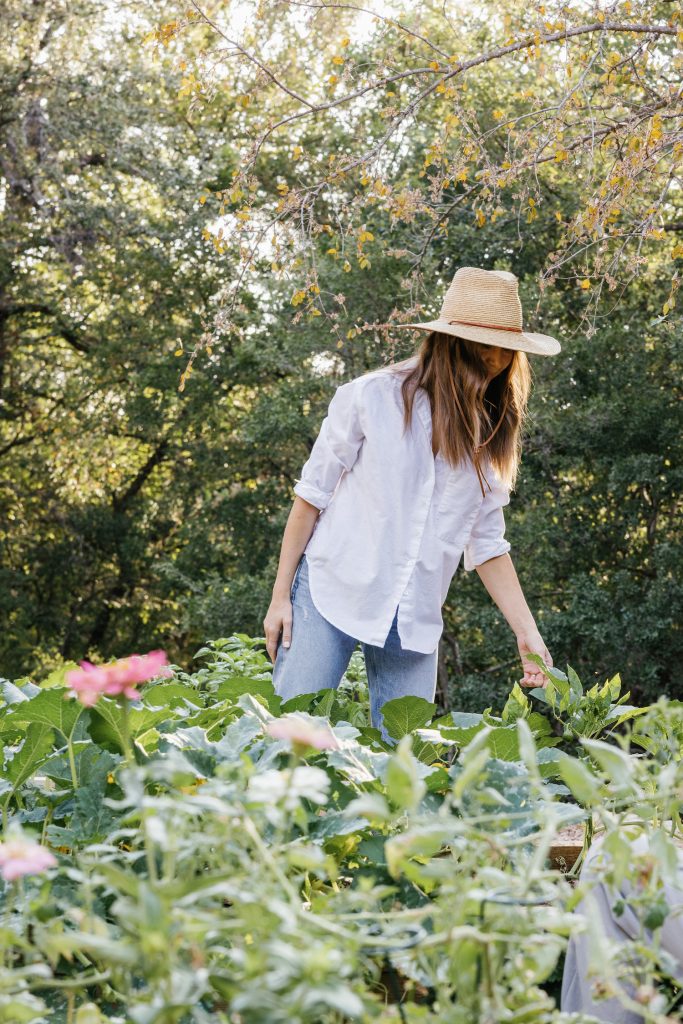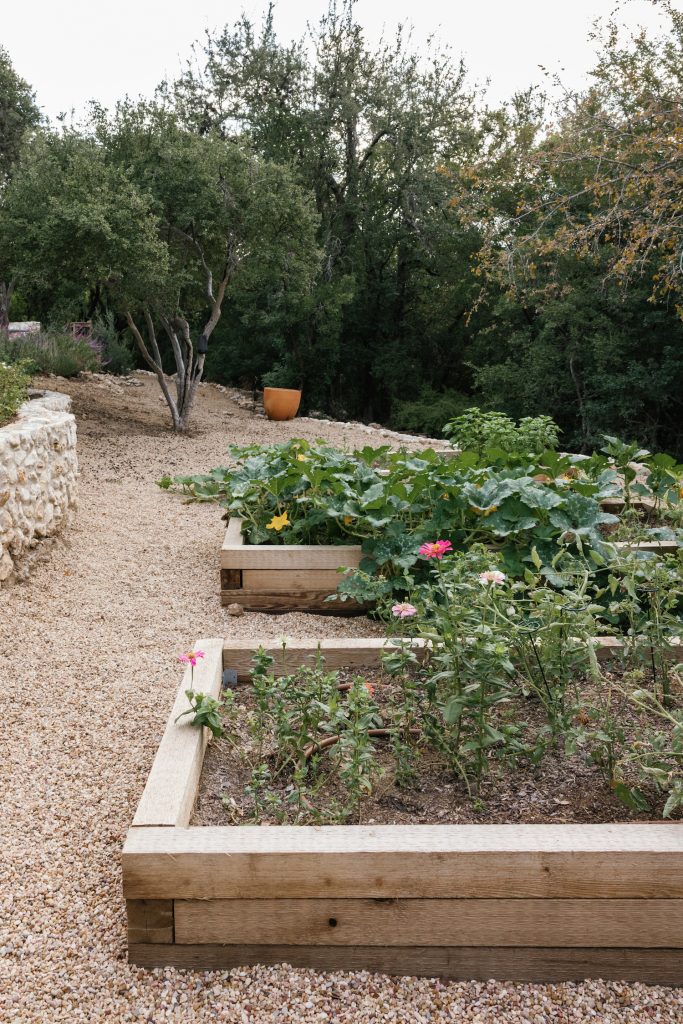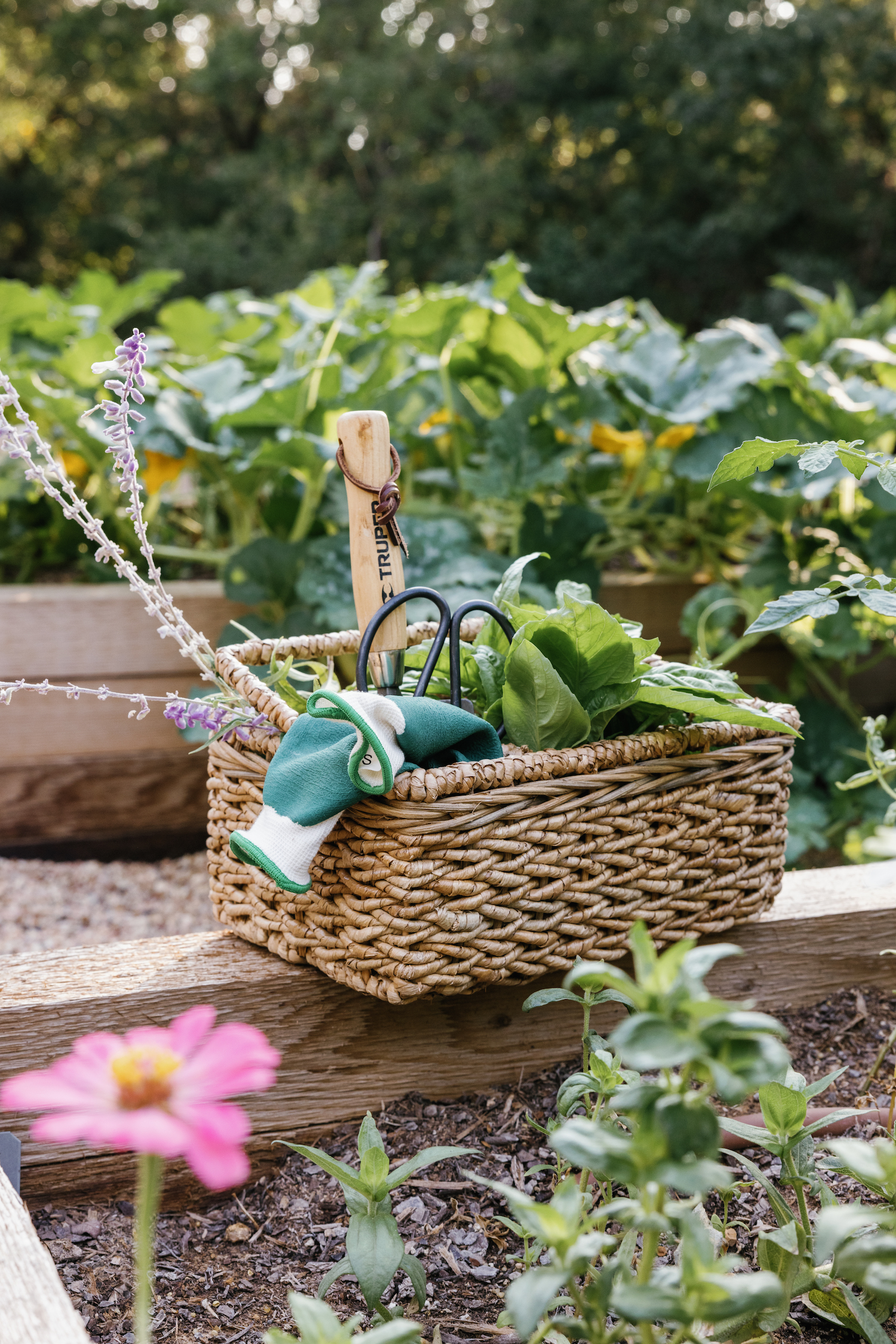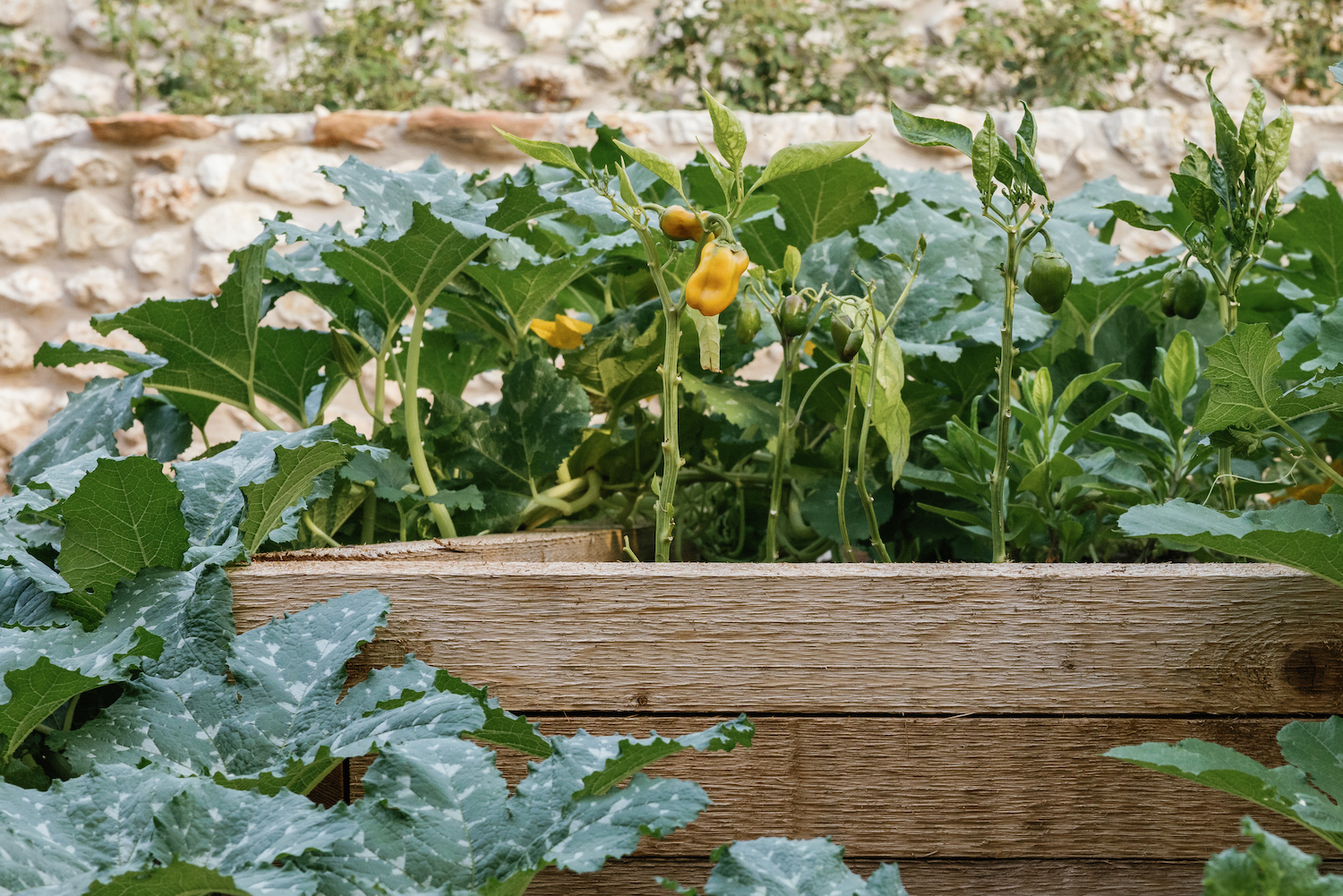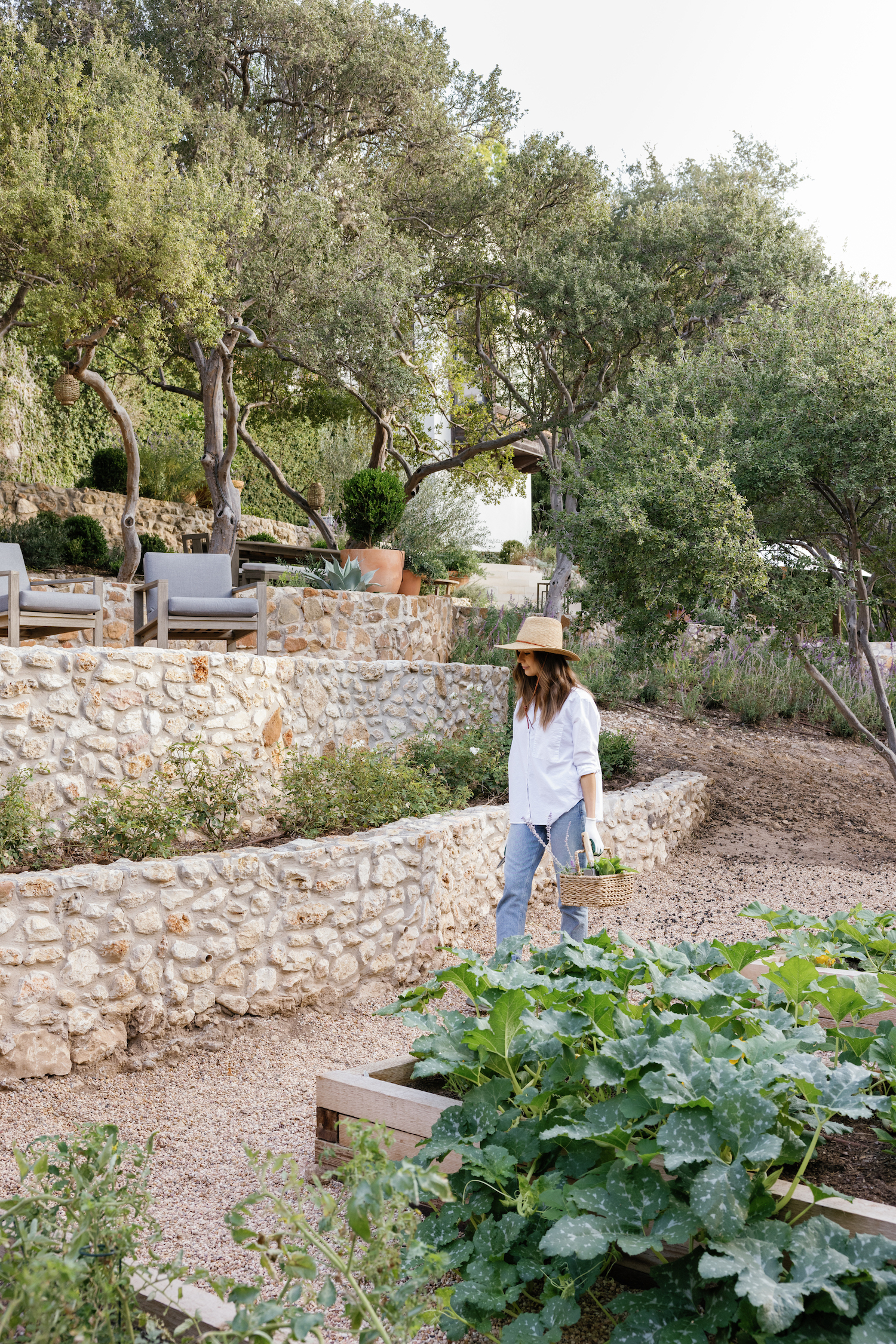[ad_1]
The inspiration for my vegetable gardens came, quite simply, from my love of cooking and eating fresh, seasonal produce. For as long as I can remember, I’ve fantasized about being able to head out into my backyard and pick all the fresh herbs and veggies for dinner that night. I wanted armfuls of mint, fresh heads of little gem lettuce (near impossible to find at grocery stores in Austin), and spring flowers to put in the center of the table.
As we’ve slowly developed our backyard over the years, we knew that when the time came, we wanted to add raised garden beds for growing vegetables and herbs. Finally this past fall, the timing was right. Over a couple months, we researched how to build our own DIY raised garden beds to grow the things we love to cook with. Our whole family pitched in. The kids loved getting their hands dirty, and it turns out that when they participated in planting, they were more likely to actually eat the vegetables that came from the harvest.
It was a journey that required clearing another plot of land behind our house, leveling a hillside, then building a trio of raised wood beds. And now that it’s done, it was worth every drop of sweat.
Not only do we get to enjoy the edible fruits of our labor—tending to a garden has turned out to be an incredibly nourishing way to incorporate more nature into our day-to-day lives.
Read on for the step-by-step of how we made our raised garden beds a reality.
How to Build a DIY Raised Garden Bed
Supplies needed to make 3 raised garden beds:
- White spray paint
- 12 cedar planks
- Rebar
- Battery-powered drill
- Shovel
- 16-20 bags of soil
- Wheelbarrow
- Drip sprinklers (optional)
- Vegetable seeds/seedlings
- 1 cubic yard of pea gravel (optional)
1. Clear and Level the Land
On our continuing quest to develop the backyard, building these raised beds required us to clear and level another area of the space. Since our home sits up on a high hillside, our foundation is built on a 30-foot retaining wall. So, the acre of land that sits beneath the home is on quite a slope. Over the last few years, we’ve been clearing the brush, so we already had a big open space where we wanted to place the beds.
However, that space needed to be flattened, so the first month of work was spent bringing in dirt and adding another terrace to level out the area where the beds would be built.
2. Map Out the Placement of the Raised Garden Beds
The next step was to map out exactly where the beds would go. Adam used white spray paint to mark out rectangles where each of the three vegetable beds would be placed. We wanted to leave enough room between each bed for a walkway that would fit a wheelbarrow, which would also ensure that each vegetable bed would stay in the sun at different times of day and not create shadows over each other.
3. Build the Frames
Once we knew where the beds were going, we could start building the frames. We decided to use cost-effective cedar planks that are durable (they should last up to 10 years!) and are easier to cut than a tropical hardwood like teak. We designed each of the three rectangular beds to measure 8-feet-by-4-feet. Since our cedar planks were 8-feet long, our wood would need minimal cuts to be the right length, making our lives easier.
4. Bring In Good Soil for Gardening
We filled each of the vegetable beds with 16-20 bags of healthy, nutrient-rich potting soil.
5. Install Sprinklers
Since we know how hot the Texas sun gets between July and September, we installed drip sprinklers to ensure all the plants would get consistent water coverage. Drip sprinklers are pipes that run right under the top of the soil and are more eco-friendly since it deeply hydrates the roots without so much of the water evaporating into air. We have them on a timer so that they get watered regularly and at the optimal time of day.
6. Plant the Garden
Obviously—this is the part we’ve been waiting for! I did tons of reading about what will thrive in Austin’s Zone 8, knowing that our climate vacillates from incredibly hot to occasional hard freezes in the winter.
I decided to devote each of my raised beds to a different purpose:
- 1 – flowers
- 2 – herbs
- 3 – vegetables
Initially, I made my plan using the square-foot gardening method and mapped out exactly where everything would go. Of course, it didn’t turn out to be quite so clear-cut. I ended up buying way more plants at the nursery than I’d planned (they were all so beautiful!) and I ended up freestyling a bit to make them all fit.
For herbs, I planted parsley, dill, chives, mint, basil, cilantro, thyme, and rosemary, and they thrived. Every week, I’d head to the backyard and cut huge bunches of herbs that I keep in mason jars on the kitchen counter for adding to recipes.
My vegetables required more of a learning curve. Since I planted the first round in the fall, I planted lots of squash which ended up taking up way more room than I’d bargained for, and I didn’t have quite as much room for lettuces as I’d hoped.
As for flowers, my zinnias lasted all the way through October, and I loved having fresh flowers from the garden on our dining table all the time.
I learned so much from the first planting season of our raised garden beds. And even though things didn’t necessarily go perfectly, I really loved the process. I tried not to sweat the small stuff, instead throwing all my learnings into our spring garden. (Which just so happens to be in progress right now!) Follow along on my backyard highlights to see how it’s going.
[ad_2]
Source link

